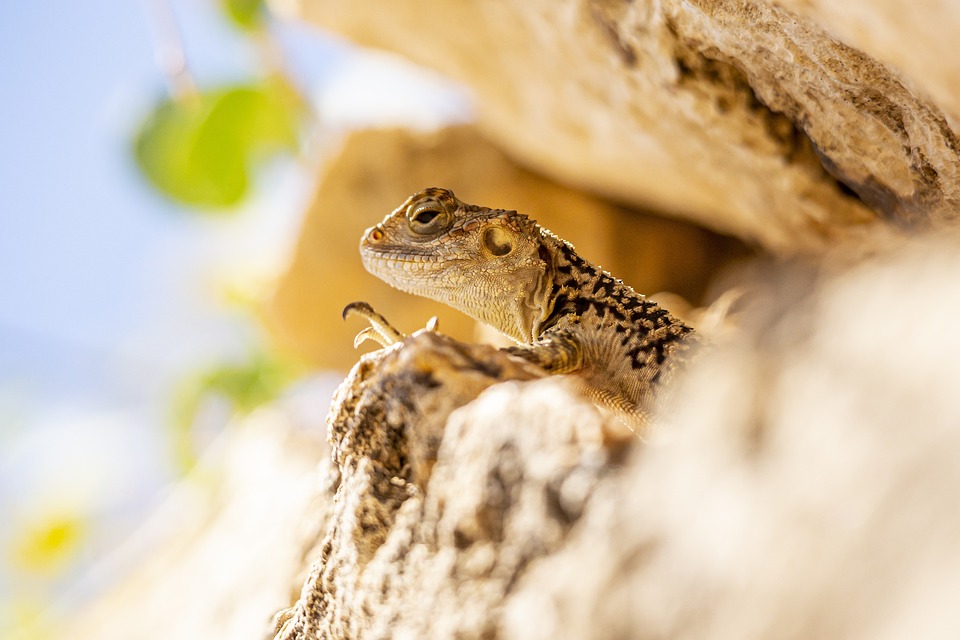The Biology of Behavior: What Animal Actions Reveal About Evolution
Understanding animal behavior is a crucial component of studying biology and evolution. This article delves into how various actions of animals provide insights into their evolutionary adaptations, social structures, survival strategies, and the environment they inhabit. From foraging and mating rituals to territoriality and social hierarchies, behavior reflects the underlying biology and evolutionary pressures that shape species.
Introduction
Animal behavior encompasses a wide array of actions that organisms display in response to stimuli from their environment. It is not merely a series of instinctual responses but a complex interplay of genetics, environment, and learning. As evolutionary processes shape species over generations, understanding behaviors helps illustrate the adaptations that have occurred in response to ecological challenges.
Research in this field draws on various disciplines, including ethology, ecology, psychology, and genetics, to unveil the intricate ties between behavior and evolution. This article aims to present an overview of significant findings in the field, emphasizing how animal actions reveal fundamental insights about evolutionary processes.
The Foundations of Animal Behavior
1. Genetics and Behavior
Behavior is influenced significantly by genetic factors. Ethologists have observed that certain behavioral traits have a heritable component, linking genetic variability to differences in behavior among individuals within a population. For example, the study of the Drosophila melanogaster (common fruit fly) has demonstrated that specific genes can affect mating behaviors, such as courtship rituals and mate selection. [1]
2. Environment and Learning
While genetics provides a blueprint for behavior, the environment also plays a pivotal role in shaping how animals act. Animals often learn from their surroundings, gaining experience that informs their future behaviors. A classic example is the case of the blue tit, which adapted its foraging behavior to open milk bottles in Britain, demonstrating how environmental changes can drive evolution in behavior. [2]
Foraging Behavior and Natural Selection
Foraging is one of the most crucial behaviors for survival and reproduction. Animals have evolved various strategies for obtaining food, driven by natural selection to maximize their efficiency and minimize risk.
1. Optimal Foraging Theory
Optimal Foraging Theory (OFT) posits that animals will optimize their foraging strategies to maximize energy intake while minimizing costs, such as time, energy exertion, and risk of predation. This theory has been validated through numerous empirical studies across different species. For example, the research on ambush predators, such as alligators, reveals how they adjust their hunting strategies based on environmental variables and prey availability. [3]
2. Social Foraging
In social animals, foraging behavior often involves group dynamics that can enhance efficiency. The behavior of wolves during hunts showcases sophisticated social structures that boost the probability of successful captures. Wolves employ strategies that involve coordination and communication, demonstrating that group behaviors can increase foraging success and, therefore, survival. [4]
Mating Systems and Reproductive Strategies
Mating behavior is another critical aspect influenced by evolutionary pressures. Various mating systems—monogamy, polygyny, polyandry, and promiscuity—have evolved in response to environmental and social factors.
1. Sexual Selection
Sexual selection is a powerful force that shapes mating behaviors and strategies. It explains how certain traits become favored in mate selection, elaborating on the concept of "runaway selection" where elaborate features, like peacock tails, arise because of preferences for these traits by the opposite sex. [5]
2. Parental Investment
The principle of parental investment elucidates how different reproductive strategies emerge based on the costs and benefits of investing in offspring. Species with high parental investment, such as birds that nurture their young until they can fend for themselves, often exhibit monogamous behaviors to ensure the survival of their offspring. Conversely, species that produce many offspring with little investment may engage in polygyny, where one male mates with multiple females, as seen in many insect and amphibian species. [6]
Social Structures and Behavior
Animal behavior is deeply intertwined with social structures, influencing how species interact and form group dynamics.
1. Altruism and Cooperative Behavior
Altruism poses an interesting puzzle in biological behavior. Instances of self-sacrificial acts, such as an individual warning others of predators, suggest that behavior can evolve to benefit the group, even at a cost to the individual. Kin selection theory, proposed by W.D. Hamilton, explains that organisms may act altruistically towards close relatives to enhance the survival of shared genetic material. [7]
2. Social Learning and Culture
Social learning conveys vital information among individuals, leading to the emergence of culture in animal societies. Examples like tool use in chimpanzees and the vocal dialects of dolphins illustrate how knowledge can be passed down through generations, fostering behavior that enhances survival and social cohesion. [8]
Territoriality and Aggression
Territoriality is another common behavior observed in animals, often driven by competition for resources. Understanding how these behavioral trends have evolved provides deeper insights into ecological and evolutionary dynamics.
1. Resource Defense
Territoriality often revolves around the defense of resources essential for survival, such as food, mates, and nesting sites. The behavior manifests in various species, including birds, fish, and mammals. For instance, male songbirds may defend territories through vocal displays and aggressive antics to deter rivals and attract mates. This behavior exemplifies evolutionary adaptations toward acquiring and safeguarding vital resources. [9]
2. Aggression and Hierarchy
Aggressive behaviors reflect the complex hierarchies within animal groups. From pack dynamics in wolves to dominance in primate societies, aggression and submission play pivotal roles in establishing social order. These hierarchical structures can drive evolution, where the most successful individuals pass their genes on to the next generation and shape social behavior through natural selection. [10]
Adaptation to Environmental Pressures
Animals adapt to their environments through both physical and behavioral strategies, which influence survival, reproduction, and overall fitness.
1. Behavioral Flexibility
The capacity for behavioral flexibility is essential for species adapting to changing environments. Animals that can adjust their behaviors in response to new conditions are often more successful than those with rigid behavioral patterns. For example, urban-dwelling species, such as raccoons, demonstrate remarkable flexibility in their foraging behaviors to maximize their success in altered habitats. [11]
2. Migration and Seasonal Behaviors
Migration patterns highlight how environmental changes influence behavior. Many species of birds and marine animals exhibit migratory behavior in response to seasonal variations in food availability and climate. The migration of the monarch butterfly, for instance, reveals a highly adaptive lifetime journey that allows it to exploit resources across different geographical regions. [12]
Developmental Influences on Behavior
Developmental biology plays a crucial role in shaping behavior across different life stages. Understanding how early experiences, genetics, and environmental interactions influence behavior helps elucidate patterns of evolution.
1. Critical Periods and Imprinting
Certain behaviors, particularly those related to social interactions, often occur during critical developmental periods. For example, imprinting in birds, such as ducks and geese, occurs shortly after hatching, establishing attachment to parental figures and influencing future behaviors in mating and social relationships. [13]
2. Lifelong Learning and Sensory Experience
Animals benefit from lifelong learning, where experiences throughout their lives shape behavior. For instance, elephants exhibit complex social structures and strategies for survival, influenced by their experiences and social interactions. Their learning capabilities emphasize the importance of environment and social dynamics in behavioral evolution. [14]
Implications for Conservation and Ethics
Understanding animal behavior has profound implications for conservation efforts and ethical considerations. As environments change due to human impact, recognizing the behavioral needs and adaptations of species can guide conservation strategies.
1. Conservation Behavior
Conserving animal behaviors is as crucial as conserving habitats. Understanding how species interact with their environments informs conservation strategies that prioritize the preservation of not just ecosystems but also behavioral dynamics essential for species survival. For example, understanding the foraging behavior of a critically endangered species can facilitate more effective management strategies. [15]
2. Ethical Considerations
As research unveils the complexities of animal behavior, ethical considerations in how we interact with and manage wildlife are becoming increasingly significant. Recognizing the capacity for social relationships, emotions, and stress responses in animals necessitates responsible approaches to habitat management and animal welfare. [16]
Conclusion
Animal behavior is a fascinating lens through which to examine evolutionary processes. From survival strategies to social dynamics and reproduction, the actions of animals reveal their adaptations to their environments. As scientists continue to unlock the intricacies of behavioral biology, we gain invaluable insights into the mechanisms of evolution and its implications for conservation.
The study of animal behavior uncovers not just the life strategies of different species but also reflects on our interconnectedness with the natural world. By understanding the biology of behavior, society can take informed steps toward preserving our planet’s diverse wildlife for future generations.
References
- Drosophila melanogaster genetic influences and courtship behavior.
- Adaptation of blue tits to foraging environments.
- Optimal foraging strategies in ambush predators.
- Social dynamics in wolf hunting.
- Sexual selection and mate preferences in peacocks.
- Parental investment in avian species.
- Kin selection and altruistic behaviors.
- Cultural transmission in chimpanzees and dolphins.
- Territoriality in songbirds and resource defense.
- Aggression and hierarchy in primate societies.
- Adaptation of urban-dwelling raccoons.
- Monarch butterfly migratory patterns.
- Imprinting in avian species and critical periods.
- Social structures and learning in elephants.
- Importance of understanding foraging behavior for conservation.
- Ethical considerations in animal management and welfare.
This extensive article provides a deep look into the relationship between animal behavior and evolutionary processes. Further research and investigation into these dynamics can foster greater respect for wildlife and drive effective conservation strategies.


























Add Comment